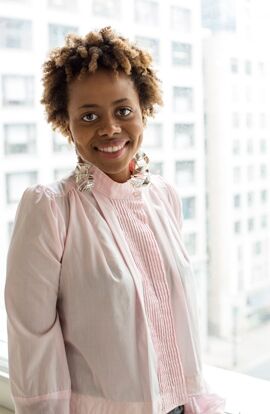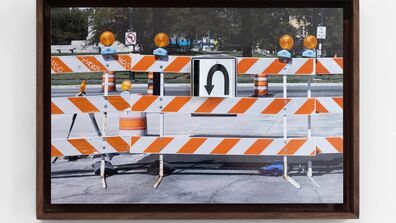
Art and Work on the West Side
by Bridget Esangga
What does it mean to live, work, and make art in Chicago’s North Lawndale neighborhood? Leah Gipson (MA 2010) invites residents of the neighborhood to tell that story during Black Eutopia, an event she is organizing with Rae Taylor as part of Chicago Artists Month that will take place Friday, October 24, at Carter’s Barbershop on Cermak Road.
Black Eutopia intends to spark a critical conversation about art form, social class, and Black labor. The backdrop of the barbershop offers a familiar, accessible setting where people are getting their haircut, yet the space will be transformed with visual art, spoken word, and musical performances. Gipson envisions the experience of walking into the event as “entering into a world.”

Taylor proposed the idea for Black Eutopia during a dinner Gipson hosted. Guests tossed around ideas for the event. Gipson saw it as a good fit for her project West Side Art Chicago and began raising money to make it happen.
“I’m interested in the possibilities that come from people in community…. I think community is something that you have to invest in and build. And so that involves a lot of different voices, a lot of different people,” she says. Her goal is to get people to come together at her event and ask questions such as, “What does community mean?” and “Why are we doing this?”
Gipson has a master of arts in Art Therapy from SAIC, and works professionally as an art therapist. While she lives in Austin, another West Side neighborhood, she is invested in North Lawndale, where she has worked for several years.
During her time at SAIC, Gipson conducted her fieldwork through a North Lawndale-based program called Girl/Friends Leadership Institute, which is run by the nonprofit organization A Long Walk Home. Gipson worked with adolescent girls who were survivors of sexual assault and other forms of gender-based violence. She created a sneaker project in which the young women altered a pair of white canvas sneakers with a message of personal empowerment and a message to the community to end the violence. Later, these shoes were worn in a walk to end violence. “The shoes become this grounding statement that the girls can take with them out into the world,” she says.
This focus on individual relationships and the relationship of the individual to the community is present throughout Gipson’s work, and something she embraced in the art therapy program. “Art therapy cannot just be about one person…. [It] has to be about a system that creates inequalities and problems for people…. Working in an interdisciplinary way and looking at social justice through that lens is what creates my work,” she says.
In addition to giving North Lawndale residents a forum to voice their individual ideas about art and Black labor, Gipson says she hopes Black Eutopia will draw in outsiders who may have a limited perception of what the area is like. “I hope they recognize that that’s been constructed. I’m trying to help reconstruct that,” she explains.
The event will culminate with a panel discussion about Black labor and art. Participants range from visual artists to a hair stylist to a business owner, all of whom are connected to the arts in some way. All of the artists involved in the event are being paid for their work, something Gipson feels strongly about.
“My hope is that the artists who come to this event will come away from it with more ideas about their work and resources—whether that be working with each other or through fundraising efforts—that come with this project,” she says.
